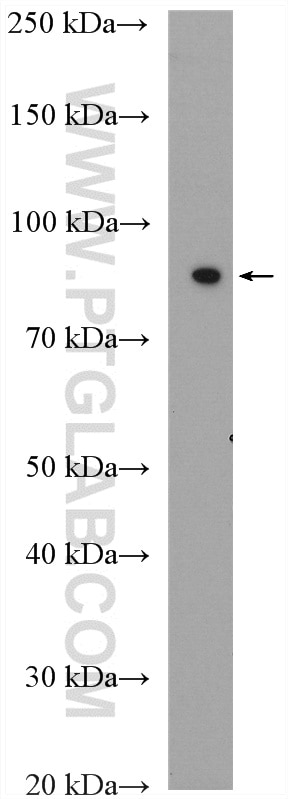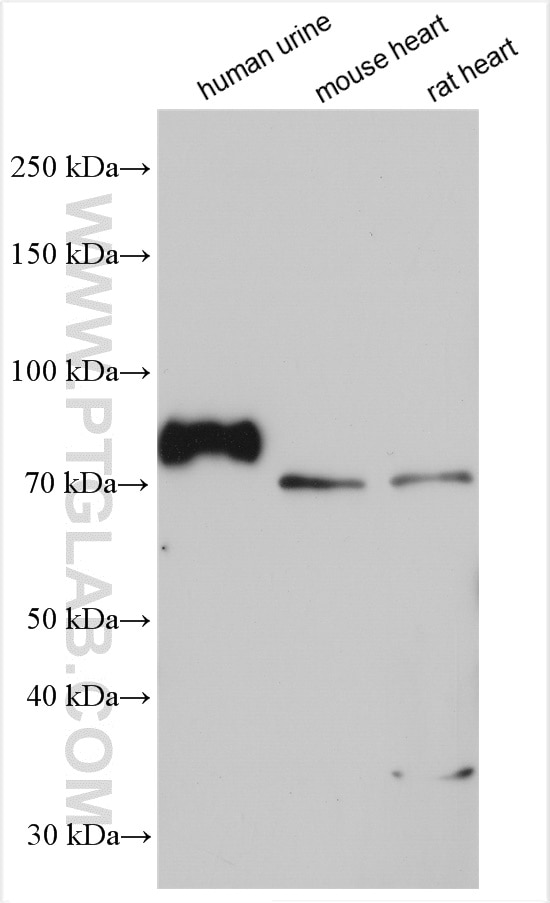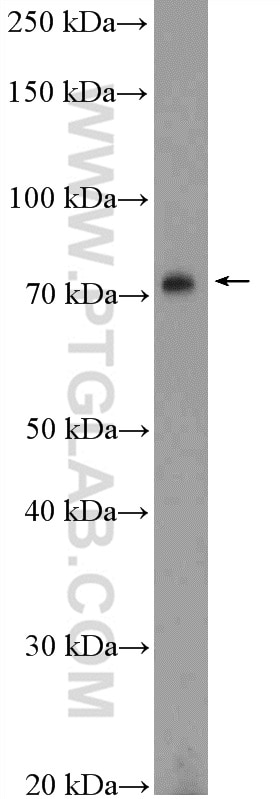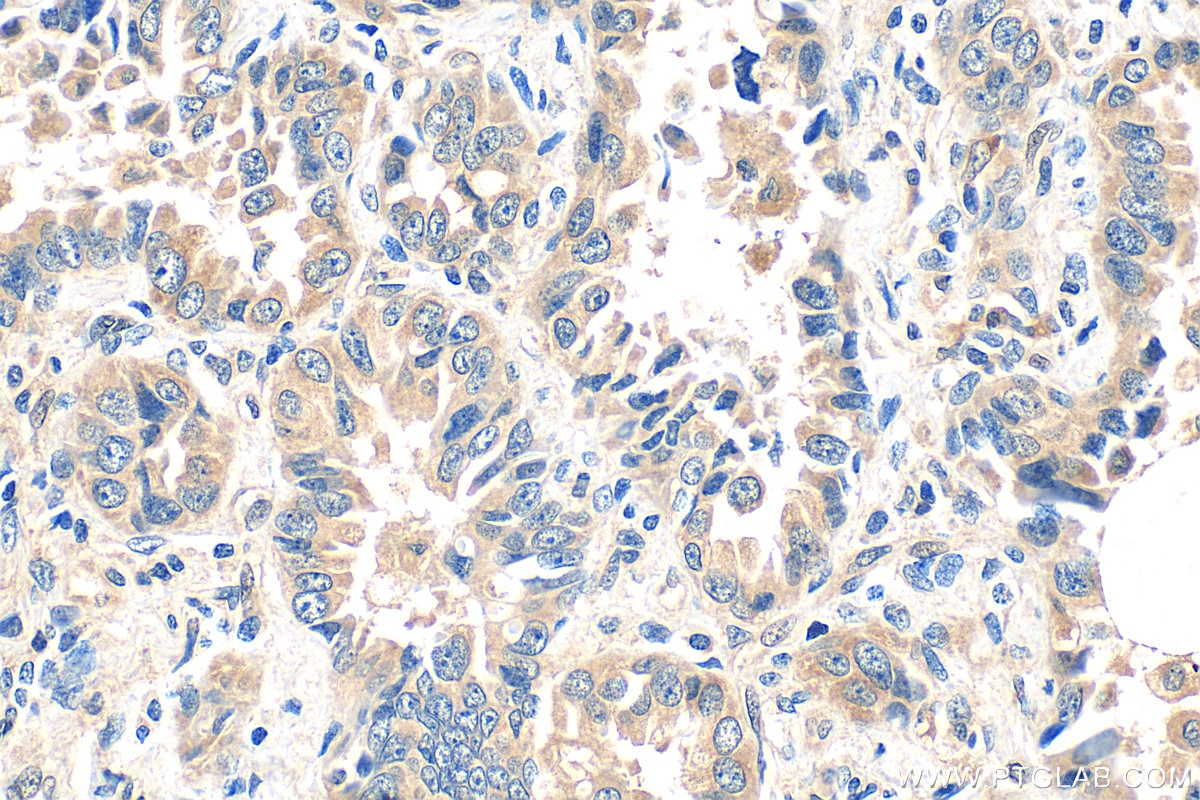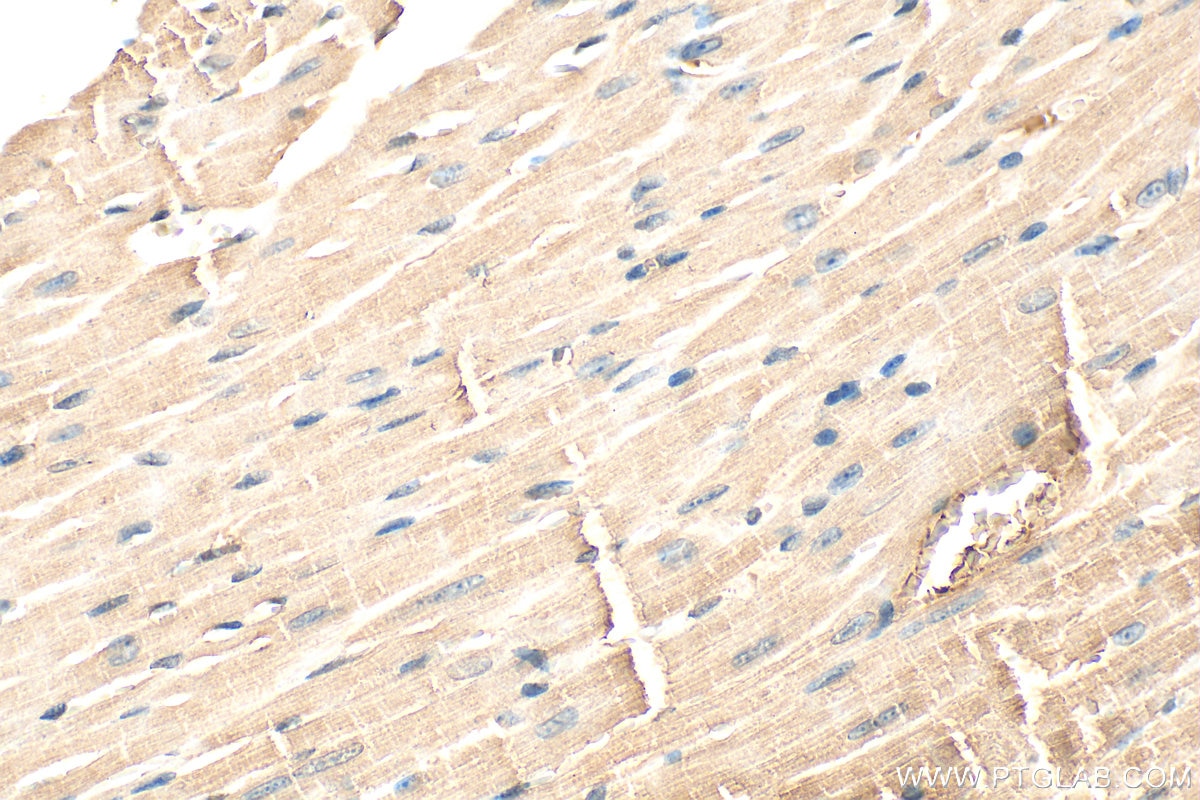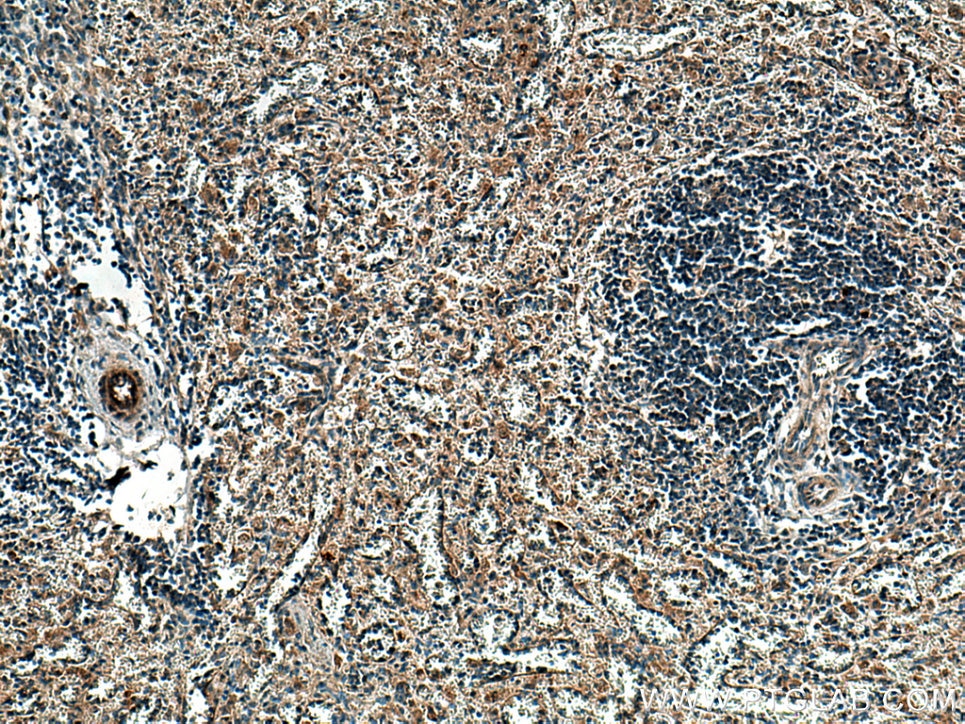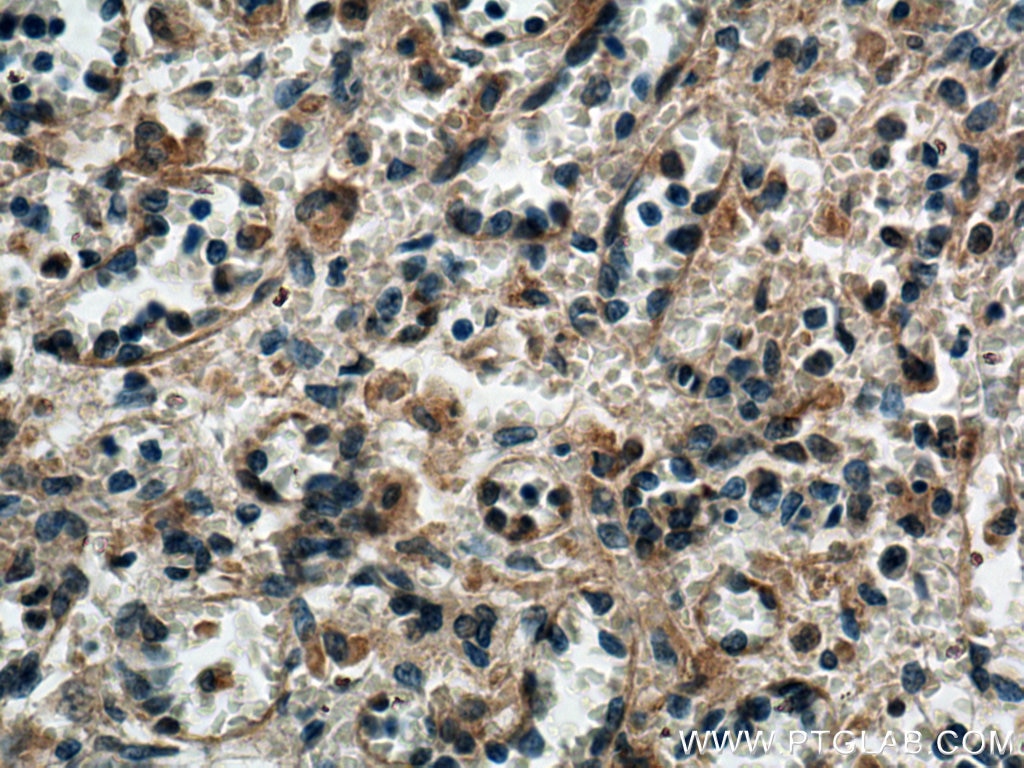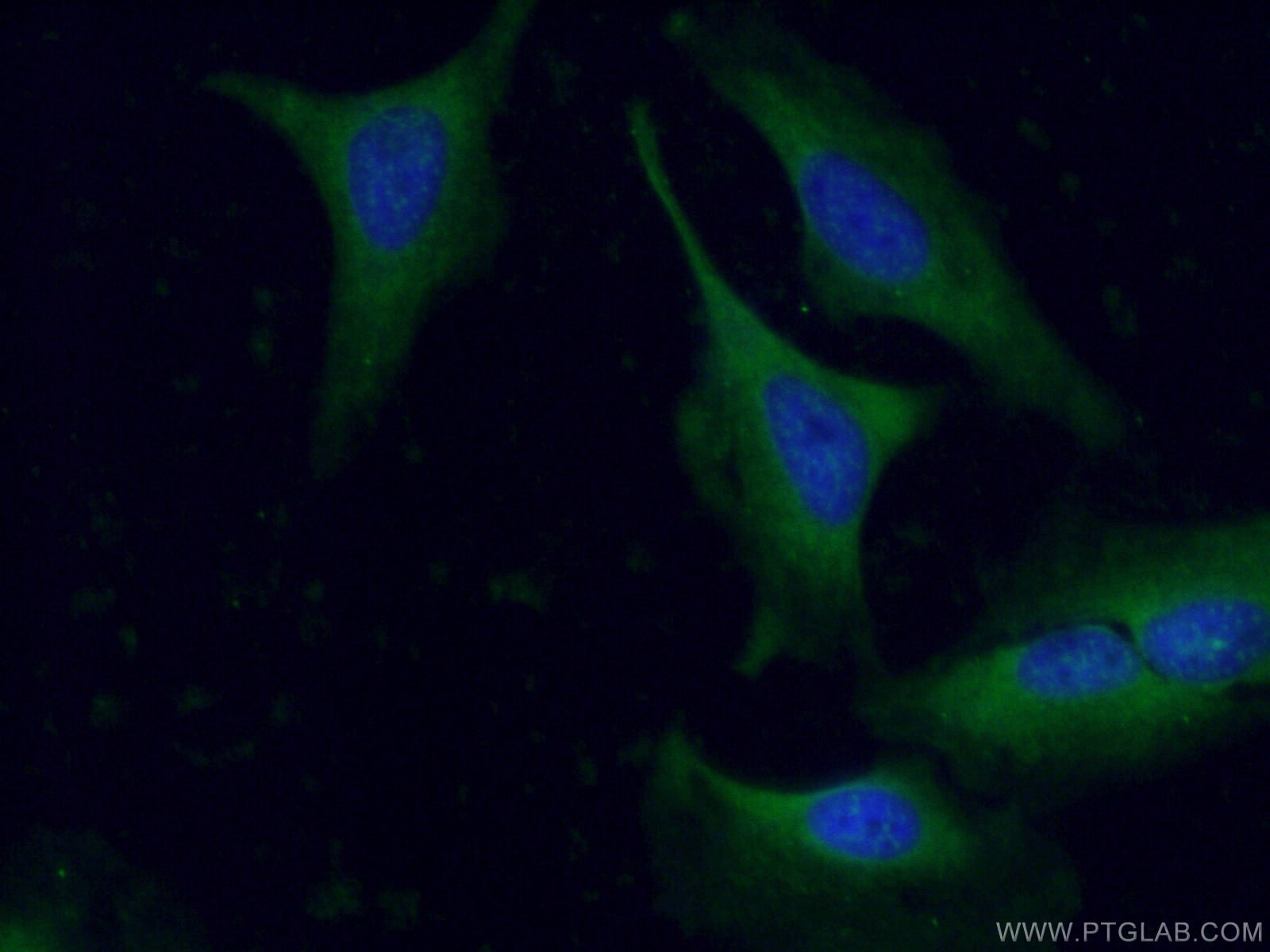Tested Applications
| Positive WB detected in | human urine sample, DU 145 cells, mouse heart tissue, rat heart tissue |
| Positive IHC detected in | human lung cancer tissue, human spleen tissue, mouse heart tissue Note: suggested antigen retrieval with TE buffer pH 9.0; (*) Alternatively, antigen retrieval may be performed with citrate buffer pH 6.0 |
| Positive IF/ICC detected in | HeLa cells |
Recommended dilution
| Application | Dilution |
|---|---|
| Western Blot (WB) | WB : 1:500-1:1000 |
| Immunohistochemistry (IHC) | IHC : 1:50-1:500 |
| Immunofluorescence (IF)/ICC | IF/ICC : 1:50-1:500 |
| It is recommended that this reagent should be titrated in each testing system to obtain optimal results. | |
| Sample-dependent, Check data in validation data gallery. | |
Published Applications
| WB | See 10 publications below |
| IHC | See 3 publications below |
| IF | See 5 publications below |
Product Information
13795-1-AP targets GAS6 in WB, IHC, IF/ICC, ELISA applications and shows reactivity with human, mouse, rat samples.
| Tested Reactivity | human, mouse, rat |
| Cited Reactivity | human, mouse, rat |
| Host / Isotype | Rabbit / IgG |
| Class | Polyclonal |
| Type | Antibody |
| Immunogen |
CatNo: Ag4617 Product name: Recombinant human GAS6 protein Source: e coli.-derived, PGEX-4T Tag: GST Domain: 336-678 aa of BC038984 Sequence: FAGGHQDSTWIVLALRAGRLELQLRYNGVGRVTSSGPVINHGMWQTISVEELARNLVIKVNRDAVMKIAVAGDLFQPERGLYHLNLTVGGIPFHEKDLVQPINPRLDGCMRSWNWLNGEDTTIQETVKVNTRMQCFSVTERGSFYPGSGFAFYSLDYMRTPLDVGTESTWEVEVVAHIRPAADTGVLFALWAPDLRAVPLSVALVDYHSTKKLKKQLVVLAVEHTALALMEIKVCDGQEHVVTVSLRDGEATLEVDGTRGQSEVSAAQLQERLAVLERHLRSPVLTFAGGLPDVPVTSAPVTAFYRGCMTLEVNRRLLDLDEAAYKHSDITAHSCPPVEPAAA Predict reactive species |
| Full Name | growth arrest-specific 6 |
| Calculated Molecular Weight | 678 aa, 75 kDa |
| Observed Molecular Weight | 75 kDa |
| GenBank Accession Number | BC038984 |
| Gene Symbol | GAS6 |
| Gene ID (NCBI) | 2621 |
| RRID | AB_2756522 |
| Conjugate | Unconjugated |
| Form | Liquid |
| Purification Method | Antigen affinity purification |
| UNIPROT ID | Q14393 |
| Storage Buffer | PBS with 0.02% sodium azide and 50% glycerol, pH 7.3. |
| Storage Conditions | Store at -20°C. Stable for one year after shipment. Aliquoting is unnecessary for -20oC storage. 20ul sizes contain 0.1% BSA. |
Background Information
Growth arrest-specific protein 6 (GAS6) is also named as AXLLG. GAS6/AXL signaling plays a role in various processes such as endothelial cell survival during acidification by preventing apoptosis, optimal cytokine signaling during human natural killer cell development, hepatic regeneration, gonadotropin-releasing hormone neuron survival and migration, platelet activation, or regulation of thrombotic responses (PMID:12364394, PMID:18840707). It can bridge virus envelope phosphatidylserine to the TAM receptor tyrosine kinase Axl to mediate viral entry by apoptotic mimicry (PMID:21501828).
Protocols
| Product Specific Protocols | |
|---|---|
| IF protocol for GAS6 antibody 13795-1-AP | Download protocol |
| IHC protocol for GAS6 antibody 13795-1-AP | Download protocol |
| WB protocol for GAS6 antibody 13795-1-AP | Download protocol |
| Standard Protocols | |
|---|---|
| Click here to view our Standard Protocols |
Publications
| Species | Application | Title |
|---|---|---|
Int J Cancer Therapeutic Activity of DCC-2036, a Novel Tyrosine Kinase Inhibitor, against Triple-Negative Breast Cancer Patient-Derived Xenografts by Targeting AXL/MET. | ||
Front Cell Infect Microbiol Persistent Exposure to Porphyromonas gingivalis Promotes Proliferative and Invasion Capabilities, and Tumorigenic Properties of Human Immortalized Oral Epithelial Cells. | ||
FASEB J Anti-human serum albumin autoantibody may be involved in the pathogenesis of autoimmune bullous skin diseases. | ||
Cancer Gene Ther Targeting LRIG2 overcomes resistance to EGFR inhibitor in glioblastoma by modulating GAS6/AXL/SRC signaling. | ||
Transplantation Activated AXL Protects Against Hepatic Ischemia-reperfusion Injury by Upregulating SOCS-1 Expression. | ||
Mol Immunol The role of the Gas6/TAM signal pathway in the LPS-induced pulmonary epithelial cells injury |
